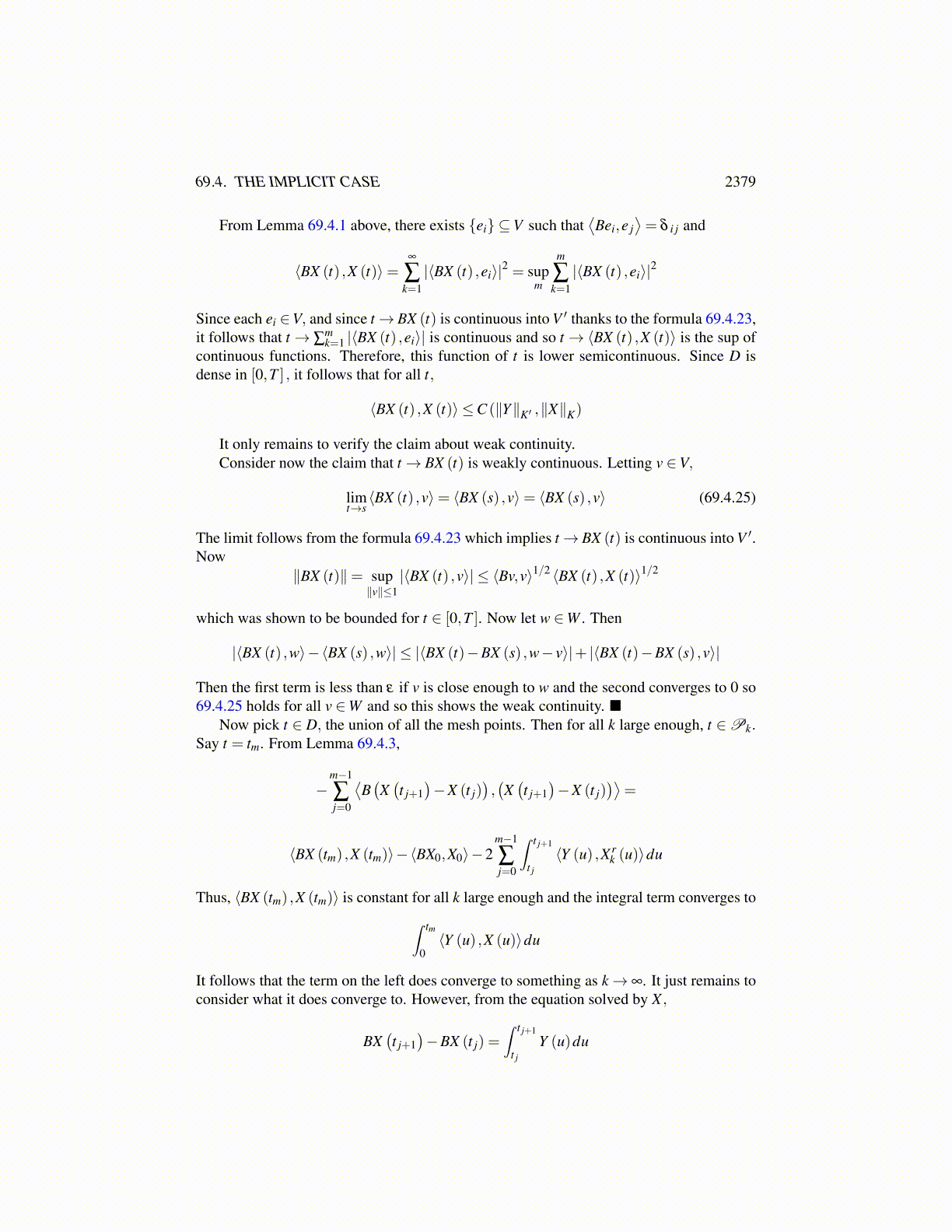
69.4. THE IMPLICIT CASE 2379
whenever k is large enough. Therefore,
Bx =∞
∑i=1⟨Bx,ei⟩Bei
in W ′. It follows that
⟨Bx,x⟩= limk→∞
⟨k
∑i=1⟨Bx,ei⟩Bei,x
⟩= lim
k→∞
k
∑i=1|⟨Bx,ei⟩|2 ≡
∞
∑i=1|⟨Bx,ei⟩|2
Theorem 69.4.2 Let V ⊆W,W ′ ⊆ V ′ be separable Banach spaces,W a separable Hilbertspace, and let Y ∈ Lp′ (0,T ;V ′)≡ K′ and
BX (t) = BX0 +∫ t
0Y (s)ds in V ′ (69.4.23)
where X0 ∈W, and it is known that X ∈ Lp (0,T,V ) ≡ K for p > 1. Then t → BX (t) is inC ([0,T ] ,W ′) and also
12⟨BX (t) ,X (t)⟩= 1
2⟨BX0,X0⟩+
∫ t
0⟨Y (s) ,X (s)⟩ds
Proof: By Lemma 65.3.1, there exists a sequence of uniform partitions{
tnk
}mnk=0 =
Pn,Pn ⊆Pn+1, of [0,T ] such that the step functions
mn−1
∑k=0
X (tnk )X(tn
k ,tnk+1]
(t) ≡ X l (t)
mn−1
∑k=0
X(tnk+1)X(tn
k ,tnk+1]
(t) ≡ X r (t)
converge to X in K and also BX l ,BX r→ BX in L2 ([0,T ] ,W ′).
Lemma 69.4.3 Let s < t. Then for X ,Y satisfying 69.4.23
⟨BX (t) ,X (t)⟩= ⟨BX (s) ,X (s)⟩
+2∫ t
s⟨Y (u) ,X (t)⟩du−⟨B(X (t)−X (s)) ,(X (t)−X (s))⟩ (69.4.24)
Proof: It follows from the following computations
B(X (t)−X (s)) =∫ t
sY (u)du
and so2∫ t
s⟨Y (u) ,X (t)⟩du−⟨B(X (t)−X (s)) ,(X (t)−X (s))⟩
= 2⟨B(X (t)−X (s)) ,X (t)⟩−⟨B(X (t)−X (s)) ,(X (t)−X (s))⟩